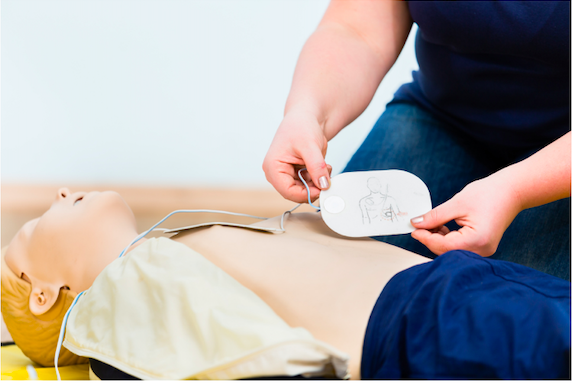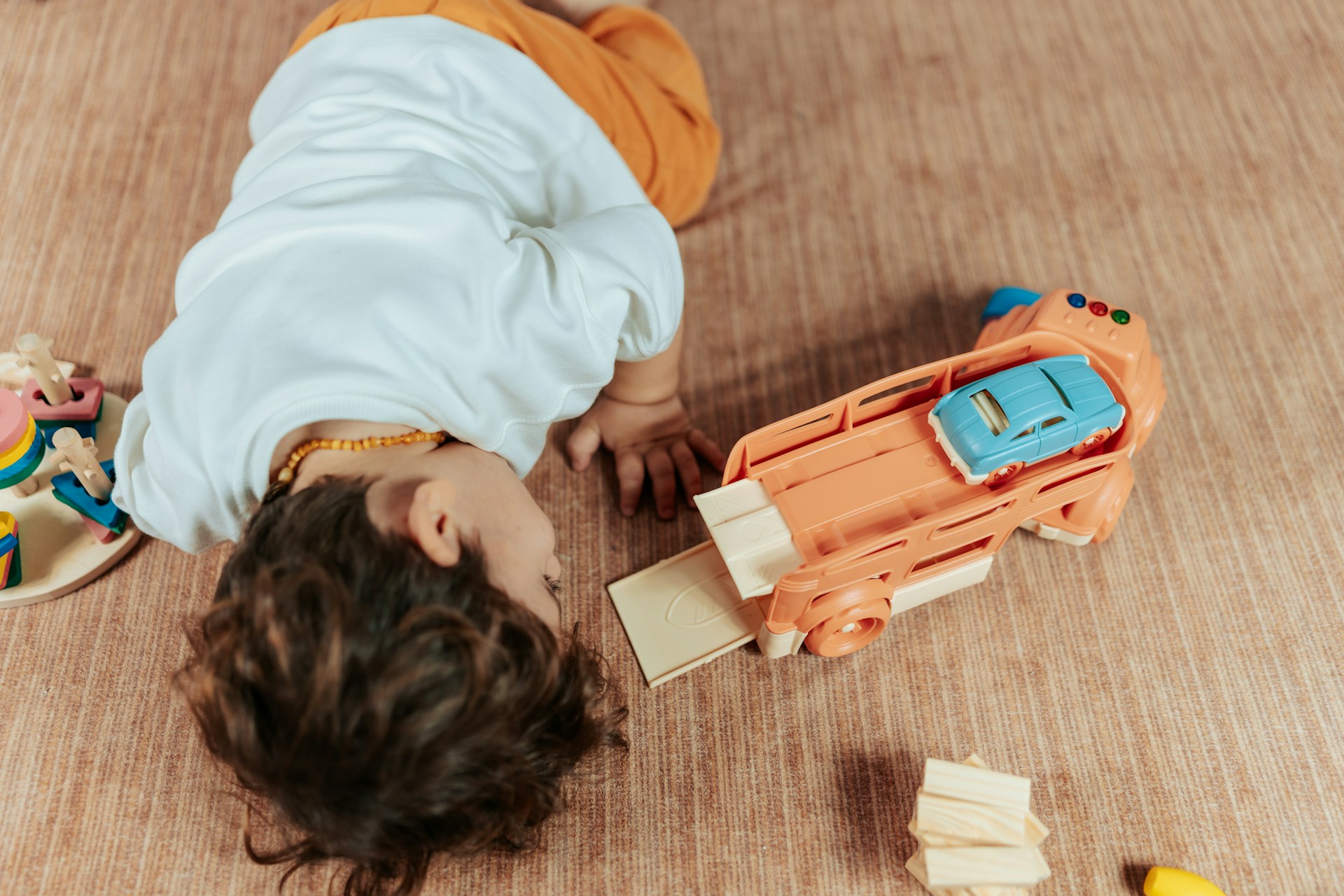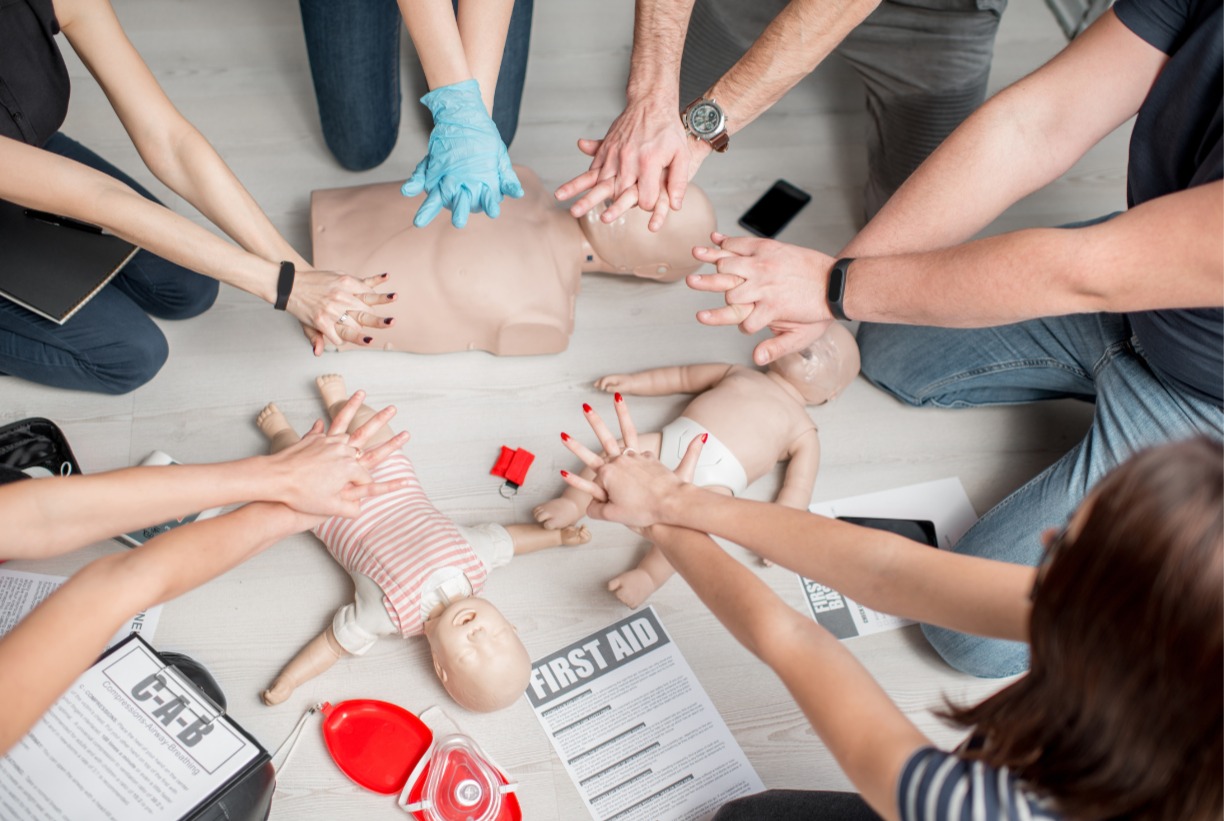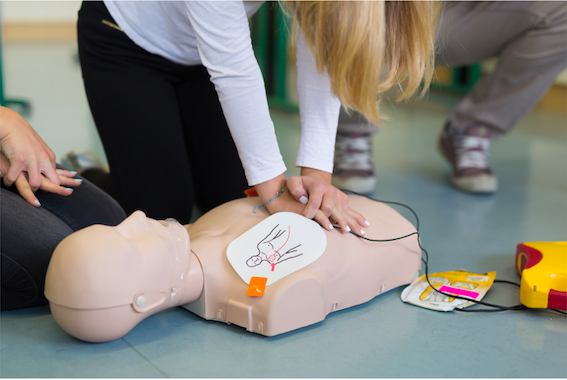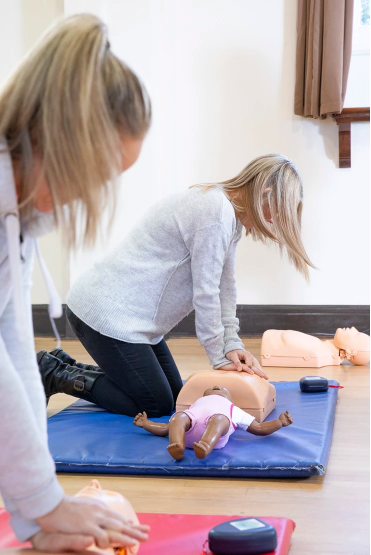If you’ve ever taken a first aid course, it’s likely that you’re familiar with the recovery position. However, it can be tricky to remember which bit goes where! So this blog aims to provide a helpful reminder of the steps we need to take.
We use the recovery position for a casualty that is unconscious but breathing and has no other life-threatening injuries or conditions. The recovery position keeps their airway clear and open. It also ensures that any vomit or fluid won’t cause them to choke.
Our main aim as a first aider, is to ensure our casualty is lying on their side. And the easiest way to achieve this is to follow these steps:
- With the person lying on their back, kneel on the floor at their side and straighten their legs if necessary.
- Extend the arm nearest you at a right angle to their body with their palm facing up.
- Take their other arm and fold it so the back of their hand rests on the cheek closest to you, and hold it in place.
- Use your free hand to bend the person’s knee farthest away from you to a right angle.
- Carefully roll the person onto their side by pulling on the bent knee towards you.
- Their bent arm should be supporting the head, and their extended arm will stop you rolling them too far.
- Make sure their bent leg is at a right angle.
- Open their airway by gently tilting their head back and lifting their chin, and check that nothing is blocking their airway.
- Stay with the person and monitor their condition until help arrives.

Spinal injury
If you think a person may have a spinal injury, do not attempt to move them until the emergency services reach you.
If it’s necessary to open their airway, place your hands on either side of their head and gently lift their jaw with your fingertips to open the airway. Take care not to move their neck.
We should suspect a spinal injury if our casualty:
- has been involved in an incident that has directly affected their spine, such as a fall from height or being struck directly in the back
- has been involved in an incident with a severe impact, such as a car accident
- complains of severe pain in their neck or back
- is not able to move their neck
- feels weak, numb or unable to move (paralysed)
- has lost control of their limbs, bladder or bowels

We put the recovery position into practice on all of my workplace first aid qualification courses, and look at different scenarios that may effect our actions as a first aider, depending on the incident we are confronted with. If you’d like to hear more about the training courses on offer, I’d love to hear from you.
